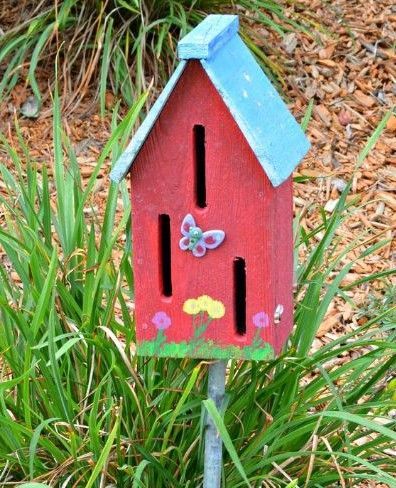Gardening for Pollinators: Habitats that Attract Butterflies and Moths
The delicate and captivating world of butterflies and moths is a sight to behold...
...but these enchanting creatures face significant challenges due to habitat loss. Understanding their natural habitat and how we can help preserve it is essential for fostering biodiversity in our gardens and beyond.
Butterflies and moths thrive in diverse ecosystems, from meadows and grasslands to woodlands and coastal regions. These environments offer an abundance of flowering plants for nectar, host plants for caterpillar development, and shelter for their metamorphic journey. By emulating these conditions in our gardens, we can provide a safe haven for these magnificent insects and play a role in their conservation.
Start by incorporating a diverse array of native plants that bloom at different times throughout the year, ensuring a steady supply of nectar. Plants like milkweed, asters, and coneflowers are popular choices that cater to a wide range of butterflies.
Additionally, identify the host plants specific to the butterfly species in your area, as they provide essential food for caterpillars. Integrating these host plants ensures that butterflies have suitable spots to lay their eggs, completing their life cycle in your garden.
To take our efforts a step further, butterfly boxes and butterfly puddlers can be a valuable addition. These simple structures provide shelter and protection for butterflies and moths, compensating for the loss of natural habitats, as well as giving them access to a variety of essential nutrients they need to survive.

Butterfly Boxes
The butterfly box is similar to a traditional bird box in that it is a similar size and enclosed on all sides save for the entry and exit point. However, butterfly boxes have narrow slits in the front rather than a hole, supposedly to replicate the splits in a tree's bark. These slits help to protect the butterflies and moths from predators and inclement weather. Butterfly houses are essential for providing butterflies somewhere safe to shelter, rest and hibernate.
Place the butterfly house in a sunny spot facing towards the south, this helps butterflies and moths to warm up naturally. Hang it near nectar rich flowers to attract them to the house. You could also add a few twigs upright inside the house to provide something for them to cling and rest on.
Butterfly Puddle Stations
Most of us expect to see colorful butterflies and moths fluttering in backyard gardens but, occasionally, you’ll find groups of them in unexpected places. Butterflies and moths have been known to congregate in patches of mud, on a sandy riverbank, or in a DIY butterfly puddle station. We all know butterflies need sweet nectar from gardens to give them energy, but did you know they also need nutrients and moisture from these soggy areas to thrive?
You will likely find a variety of species using a butterfly puddle, but it will be frequented most often by members of the swallowtail family (like these common swallowtails you should know), sulphurs and whites. You’ll also find tiger swallowtails, red-spotted purples, white admirals, cabbage whites, and clouded and cloudless sulphurs at butterfly puddles. They are all there for one reason—to ensure they survive and thrive for many generations to come.
How to Create a DIY Butterfly Puddle Station
Creating a safe, welcoming environment for butterflies has never been easier! Follow these steps and watch as these winged friends flock to your garden:
1. Find and fill a shallow dish or container with soil, small rocks, or sand.
2. Add a few flat rocks to provide perching spots.
3. Pour enough water in the container to moisten the soil and sprinkle some salt on the surface.
4. Keep the soil moist during the heat of the day, when butterflies are more likely to visit.
Food Scraps for Butterflies
As we mentioned above, butterflies are attracted to unsavory foodstuffs, such as moist animal droppings, urine and rotting fruits. Try putting out slices of overripe bananas, oranges and other fruits, or a sponge in a dish of lightly salted water to see which butterflies come to investigate. Sea salt provides a broader range of micronutrients than regular table salt.
Did you know? Butterflies cover larger areas than bees and get almost
all of their food from nectar. Pollen sticks to their bodies as they feed, so that they pass
it from flower to flower, pollinating the plants. Unlike bees, they don't eat pollen.
Conclusion
By embracing butterflies and moths in our gardens, we foster an environment that goes beyond aesthetics. These graceful creatures serve as pollinators, contributing to the reproduction of many plant species, including some of our favorite fruits and vegetables. Furthermore, by providing them with a sanctuary in the form of butterfly boxes and suitable habitats, we play an active role in their conservation.
As gardeners, we have the incredible opportunity to make a positive impact on the natural world right outside our doorstep. By incorporating butterfly-friendly elements into our gardens, we promote biodiversity, protect these remarkable insects from habitat loss, and contribute to the delicate balance of nature. Embracing butterflies and moths in our gardens not only brings joy and wonder but also connects us more deeply to the wonders of the natural world. Let us unite in our efforts to create spaces where butterflies and moths can thrive and inspire future generations to cherish and protect these delicate jewels of the sky.
Next in our Gardening for Pollinators series, we will explore different ways you can make your backyard garden more hospitable to the most widely recognized pollinators in the world—the bees!
Check out the latest:









